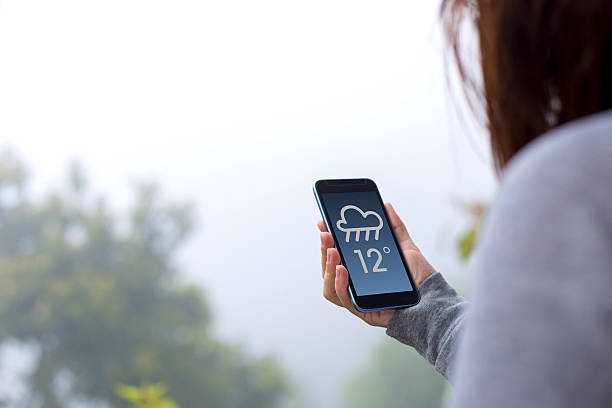
You might recall a great deal of debate about the reliability of weather forecasting websites and apps a few years ago. The inaccurate weather predictions provided by these applications caused many headaches for many people. This is because most data came from satellites or a small number of weather API stations with little access to local ground conditions.
However, today’s weather websites and apps use innovative technologies to offer weather predictions. They can offer local forecasts for weather API and other environmental factors because they have access to much more data. The Internet of Things (IoT), the most recent technology employed by weather agencies, allows them to accurately anticipate atmospheric conditions.
How IoT infrastructure enhances weather forecasting accuracy
A network with additional sensors
The early sensors meteorologists used to forecast the weather API were mostly located on airports or oceangoing ships, claims Computerworld. These institutions were large enough to house the equipment without interfering with everyday operations, and they also had the greatest need for quick, reliable meteorological information.
These sensors, which monitor light, motion, temperature, pressure, and moisture, are now easier to find thanks to IoT-enabled technologies. These devices may now be mounted on cars by weather forecasters to provide precise information about the state of the roads. Even the majority of cell phones contain a handful of these sensors. IoT technology enables forecasters to view a more comprehensive map with many more data points than airports and maritime vessels.
More data experimentation is also made possible by the abundance of sensors. The location of the equipment that produces the most precise findings on the vehicle can be seen by meteorologists, who can then prioritize that information in their input.
Including air quality as a factor
The abundance of sensors has allowed for the tracking of air quality in addition to weather. According to Data-Smart City Solutions, air quality sensors have been installed in several significant U.S. cities utilizing many IoT-enabled techniques. The most fundamental is smartphone data that enables exact user tracking to determine how frequently a resident is in poor air quality locations. This source must be combined with other sensors because it is not powerful enough to collect all of the essential data on its own.
Air quality sensors are kept in vehicles for further mobile data collecting, just like the other meteorological equipment. The issue is that while the data is recorded in real-time, the information stream ends as soon as the car leaves the vicinity. Unless the car continuously travels back and forth across the same area, this method cannot by itself show how air pollution changes during the day.
The third approach is the most effective. Sensors for air quality can be incorporated into current infrastructure. Sofa seats, and park benches with solar panels that can power USB devices and give connections for data collecting, have even been introduced in some areas like Boston. Although this technology is continuous and exact, it has expensive initial installation costs.
Impact of IoT on Activities Affected by Weather
Numerous weather-dependent businesses, such as shipping operations, agricultural and mining, building, and aviation, could benefit from the Internet of Things, in addition to meteorology and public safety.
Shipping: Reliable predictions prevent cargo shipments from being delayed by unfavorable weather conditions like high winds or extremely cold temperatures that can significantly delay or cancel delivery plans.
Agriculture: Farmers may manage their crops more effectively with the help of IoT devices that transmit real-time environmental conditions information. For instance, IoT enables farmers to decide how much and when water to use without overwatering or running the danger of undernourishment by sensing levels of soil moisture in the field.
Mining: The potential of IoT to offer real-time data on climate changes helps miners’ capacity to foresee when they must take preventive steps, such as relocating workers or ceasing operations. Doing this can reduce the weather’s hazards to their productivity and safety.
Building: IoT sensors integrated into building materials can notify contractors about environmental conditions that might jeopardize construction efforts. Engineers can identify a weakness early and dedicate more resources as necessary, for example, if an object cannot withstand strong winds or heavy rain.
Aviation: Expected wind speeds and other circumstances must be considered by flights heading toward locations with severe weather API to prevent landing or crashing. Airlines can accommodate passengers more effectively and avoid delays thanks to IoT, which enables them to make better travel decisions more quickly.
Ambee and IoT devices
Ambee offers a wide variety of comprehensive datasets for various geospatial and meteorological characteristics. For more than 90 nations worldwide, Ambee has precise, real-time weather, soil, air quality, pollen, and fire data at a street-by-street level of detail. Ambee has routed requests to the proper places and models using the GeoPandas approach for limiting access to a certain geographic area.
IoT in Weather Monitoring: The Future
Technology for weather API forecasting has advanced significantly in recent years. Weather forecasts are now frequently accurate to within 10% of the collected data, having developed from a purely empirical discipline that could not do so based on objective data.
IoT-based weather forecasting, however, promises to go further. Meteorologists can provide extremely specific and localized forecasts with much more data points inside an increasingly integrated globe, enhancing the precision with which weather conditions may be predicted.
The potential of IoT is enormous, and its adoption will significantly enhance people’s lives. Although it might take some time for IoT to become the norm in meteorology, the foundation has been set, and the sector is ready for change.
